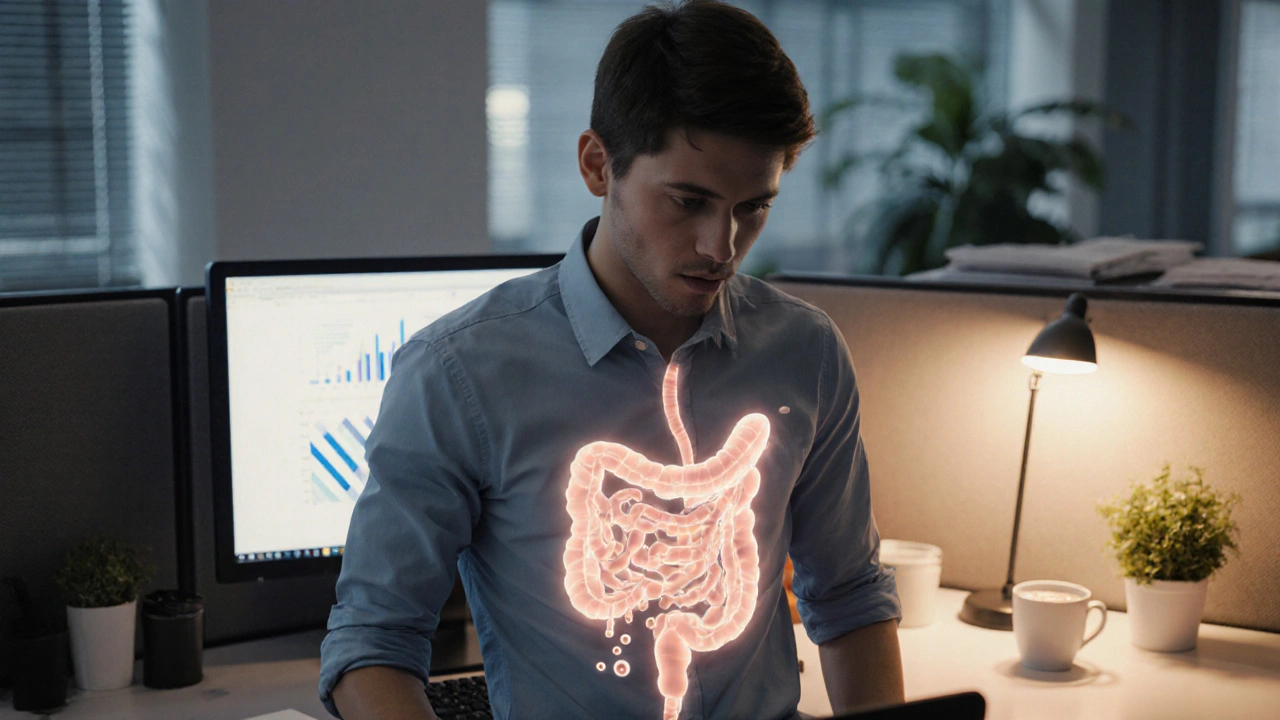Gas Relief: Fast, Safe Ways to Ease Bloating and Discomfort
When you’re looking for gas relief, the process of reducing excess intestinal gas and the pressure it creates. Also known as flatulence relief, it involves a mix of diet tweaks, over‑the‑counter aids, and lifestyle habits that target the root causes of gas buildup.
One of the most common companions to gas relief is bloating, a feeling of fullness or swelling in the abdomen caused by trapped gas or fluid. While bloating feels uncomfortable, it’s often a symptom of underlying digestive issues. Another key player is digestive enzymes, natural proteins that break down food components like carbohydrates, proteins, and fats. By improving the breakdown of tough foods, enzymes can prevent undigested particles from fermenting in the gut—one of the main triggers for gas. Probiotics, live beneficial bacteria that help balance gut flora also play a role; a healthier microbiome means less gas‑producing bacteria and smoother digestion. Finally, antacids, medications that neutralize stomach acid and can reduce gas formation provide quick, short‑term relief for occasional flare‑ups.
Common Triggers and Practical Solutions
Most people experience gas after meals that contain high‑fiber beans, cruciferous veggies, or carbonated drinks. The body’s natural response is to ferment these foods, creating hydrogen, methane, or carbon dioxide—leading to that familiar pressure. Cutting back on carbonated beverages, chewing food thoroughly, and avoiding gum that adds air to the stomach are simple steps that often make a big difference. When it comes to diet, adding a pinch of ginger or a dash of peppermint tea can calm the gut and reduce gas production.
For those who need a supplement, enzyme blends that include alpha‑galactosidase (helps break down beans) and lactase (helps digest dairy) are popular choices. They work by tackling the specific sugars that bacterial fermentation loves. Probiotic strains like Lactobacillus plantarum or Bifidobacterium infantis have been shown to lower gas‑related symptoms in clinical trials, making them a solid long‑term addition.
If the discomfort pops up suddenly, an over‑the‑counter antacid such as calcium carbonate or a simethicone product can provide rapid relief. Simethicone works by coalescing tiny gas bubbles into larger ones that are easier to pass, effectively easing pressure within minutes. While antacids are great for short‑term fixes, they don’t address the underlying cause, so pairing them with lifestyle changes yields the best results.
Beyond food and supplements, movement matters. A brief walk after eating stimulates intestinal motility, helping gas travel through the digestive tract. Gentle stretches, like the knee‑to‑chest pose, can also release trapped air. Staying hydrated supports overall digestion, and regular exercise keeps the gut moving at a healthy pace.
When you combine these tactics—mindful eating, targeted enzymes, probiotic support, occasional antacid use, and light activity—you create a comprehensive plan that targets every stage of gas formation. This multi‑layered approach mirrors the semantic connections we see in the health topics covered across our site: just as gas relief intersects with diet, medication, and gut microbiota, each article below explores a piece of that puzzle, from thyroid health to pain management.
Below you’ll find a curated collection of articles that dive deeper into related health areas. Whether you’re curious about how digestive enzymes stack up against common pain relievers or you want a side‑by‑side look at antacid alternatives, the posts are organized to give you quick, actionable insights. Keep reading to discover the science, practical tips, and product comparisons that will help you manage gas and boost overall digestive wellness.

Low-FODMAP Diet for Flatulence Relief: How It Works
Haig Sandavol Oct 4 15Discover how the Low-FODMAP diet can reduce flatulence, the science behind it, practical meal ideas, and tips to avoid common pitfalls for lasting gas relief.
More Detail